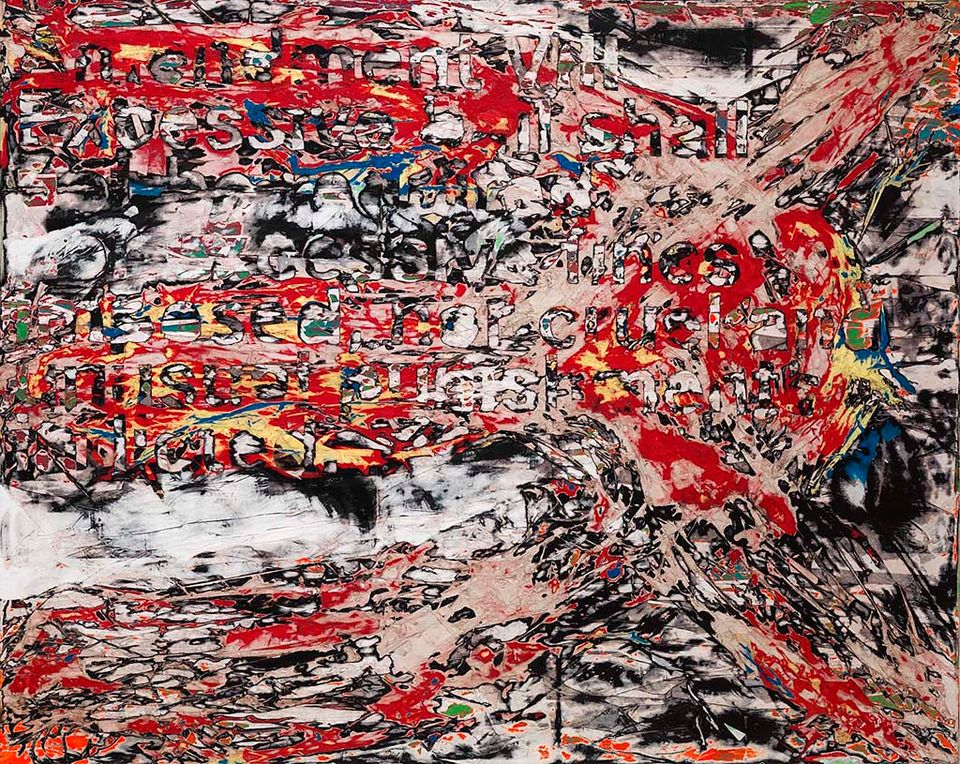

Each month, visitors to SAAM are invited to participate in a discussion-based program called Conversation Pieces. Spending an hour with a single work of contemporary art, participants engage in an open-ended experience of guided looking and discussion facilitated by Joanna Marsh, Senior Curator of Contemporary Interpretation. Marsh wrote about the theory behind the program in a previous blog post. Here's a taste of October's conversation.
"Restless." "Chaotic." "Visceral." These were some of the first descriptive words voiced by the dozen or so adults who gathered in SAAM's Lincoln Gallery to discuss Mark Bradford's Amendment #8 on the evening of October 5th. Perched on small blue stools, the group leaned in intently to look closer at the artwork.
Though the piece is abstract, some saw references to landscape or the human body in Bradford's artwork. Others focused on the artist's use of color, seeing the suggestion of violence in his generous use of red. Participants noticed quickly that there were words embedded on the canvas, and with the help of the label, were able to identify it as the text to the Eighth Amendment to the United States Constitution. A lively discussion ensued about what Bradford might have been trying to say about this amendment, which protects Americans from "excessive bail" and "cruel and unusual punishment."
Marsh shared information about the artist's process —building up layer upon layer of paper and sanding each down to unearth the surfaces below— and some were surprised to learn the piece was constructed from paper rather than paint. Others wondered about possible art historical references to Abstract Expressionist painting, while one was curious about the relationship between Bradford's choice of material and his personal biography. Several people noted connections between the artist's process and his subject matter, and thought Bradford's manipulation and blurring of his canvas might be intended to parallel the way our interpretation of the Amendments has been the subject of argument and debate, evolving over time.
Before we knew it, a security officer was kindly reminding us the museum was closing. A participant joked that he hadn't been sure they could spend an hour with such an abstract piece, but as the conversation continued into the elevator, it was clear there was still more to unpack. While artworks like Amendment #8 can seem intimidating at first, our discussion was a reminder of what can be discovered when we slow down and start a conversation.
The next Conversation Pieces discussion will be held on Wednesday, November 16th at 6 p.m. No advanced registration is required for this free program.


















